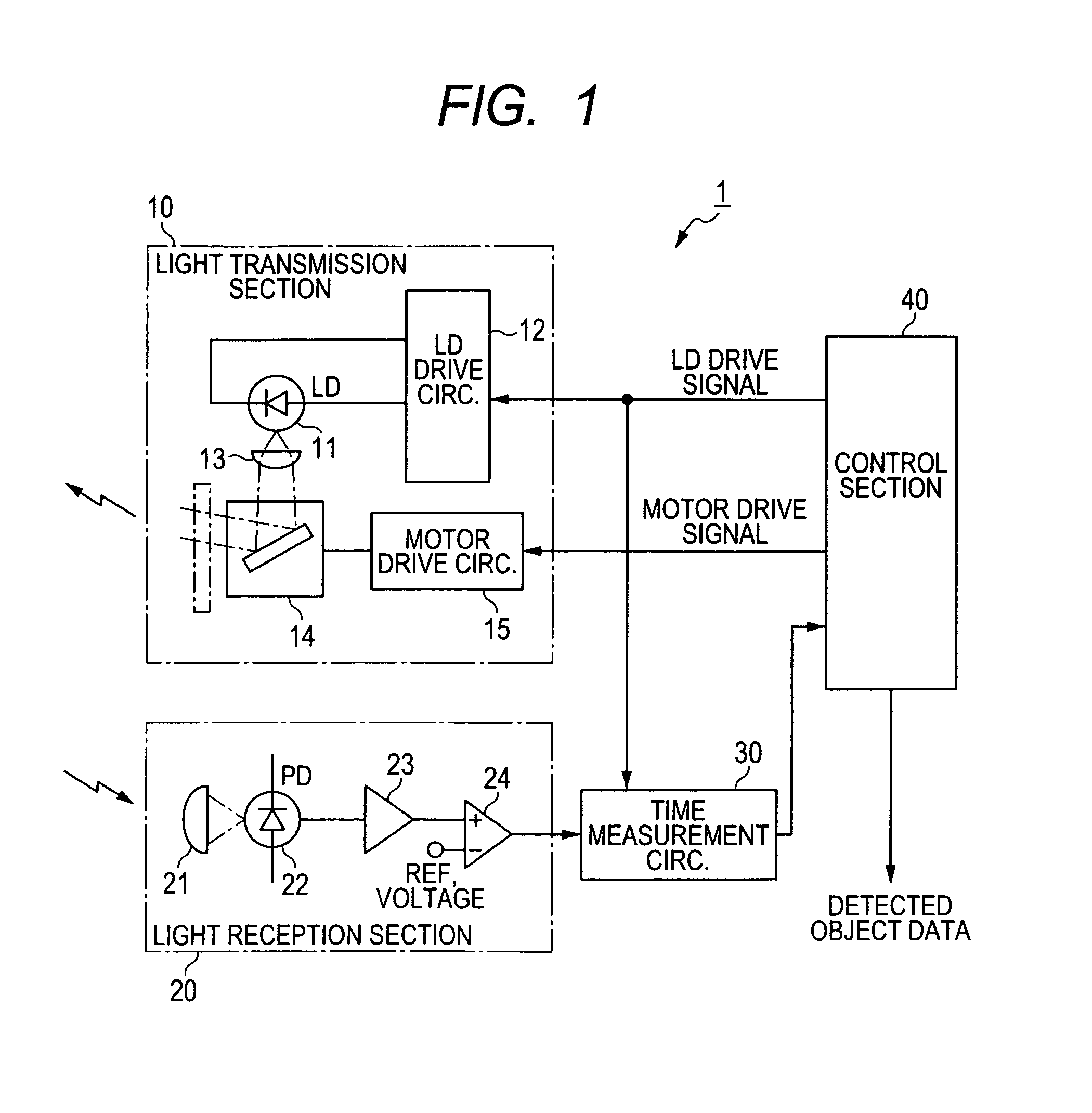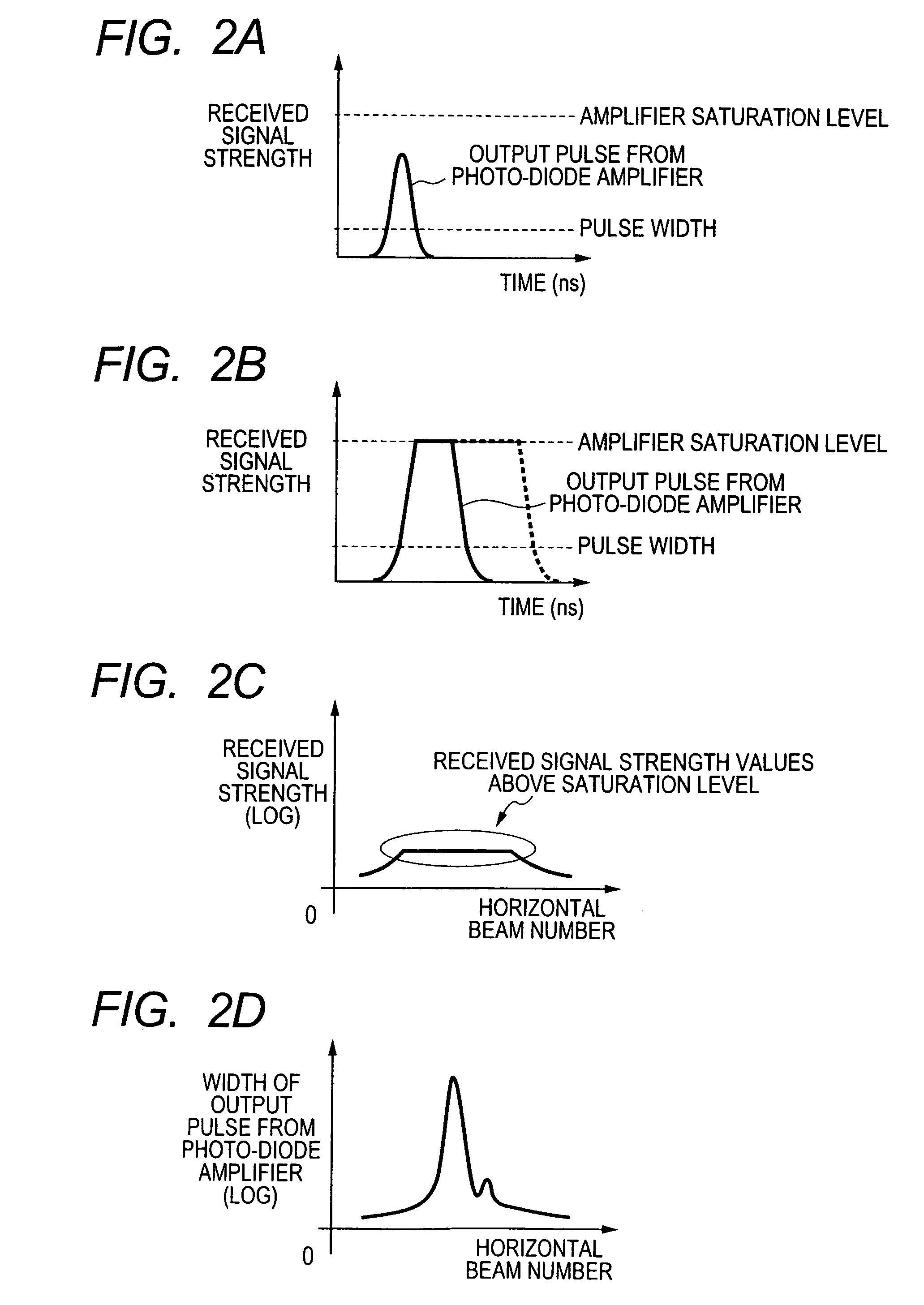Object recognition apparatus utilizing beam scanning for detecting widths of objects of various sizes and located at various ranges
a beam scanning and object technology, applied in the direction of reradiation, distance measurement, instruments, etc., can solve the problems of not being valid, not being able to transmit beams having ideal cut-off characteristics, and the effect of reducing the resolution of beam scanning is more severe, so as to achieve the effect of greater accuracy and reliability of detecting object width
- Summary
- Abstract
- Description
- Claims
- Application Information
AI Technical Summary
Benefits of technology
Problems solved by technology
Method used
Image
Examples
Embodiment Construction
[0046]FIG. 1 is a block diagram showing the overall configuration of an embodiment of an object recognition apparatus, designated by numeral 1, which is installed in a vehicle referred to in the following as the host vehicle. The center of the object recognition apparatus 1 is assumed to be located on a central front / back axis of the host vehicle. The object recognition apparatus 1 serves to detect objects located ahead of the host vehicle and generate object data corresponding to each detected object, with the data specifying the estimated position and width of the object. The detected object data obtained by the object recognition apparatus 1 are supplied to a vehicle control apparatus (not shown in the drawings), for use in generating warning indications to the vehicle driver when a detected object is judged to be within a predetermined warning region. In addition (when the detected object is a candidate preceding vehicle) the detected object data may be applied for intra-vehicle...
PUM
 Login to View More
Login to View More Abstract
Description
Claims
Application Information
 Login to View More
Login to View More - R&D
- Intellectual Property
- Life Sciences
- Materials
- Tech Scout
- Unparalleled Data Quality
- Higher Quality Content
- 60% Fewer Hallucinations
Browse by: Latest US Patents, China's latest patents, Technical Efficacy Thesaurus, Application Domain, Technology Topic, Popular Technical Reports.
© 2025 PatSnap. All rights reserved.Legal|Privacy policy|Modern Slavery Act Transparency Statement|Sitemap|About US| Contact US: help@patsnap.com



